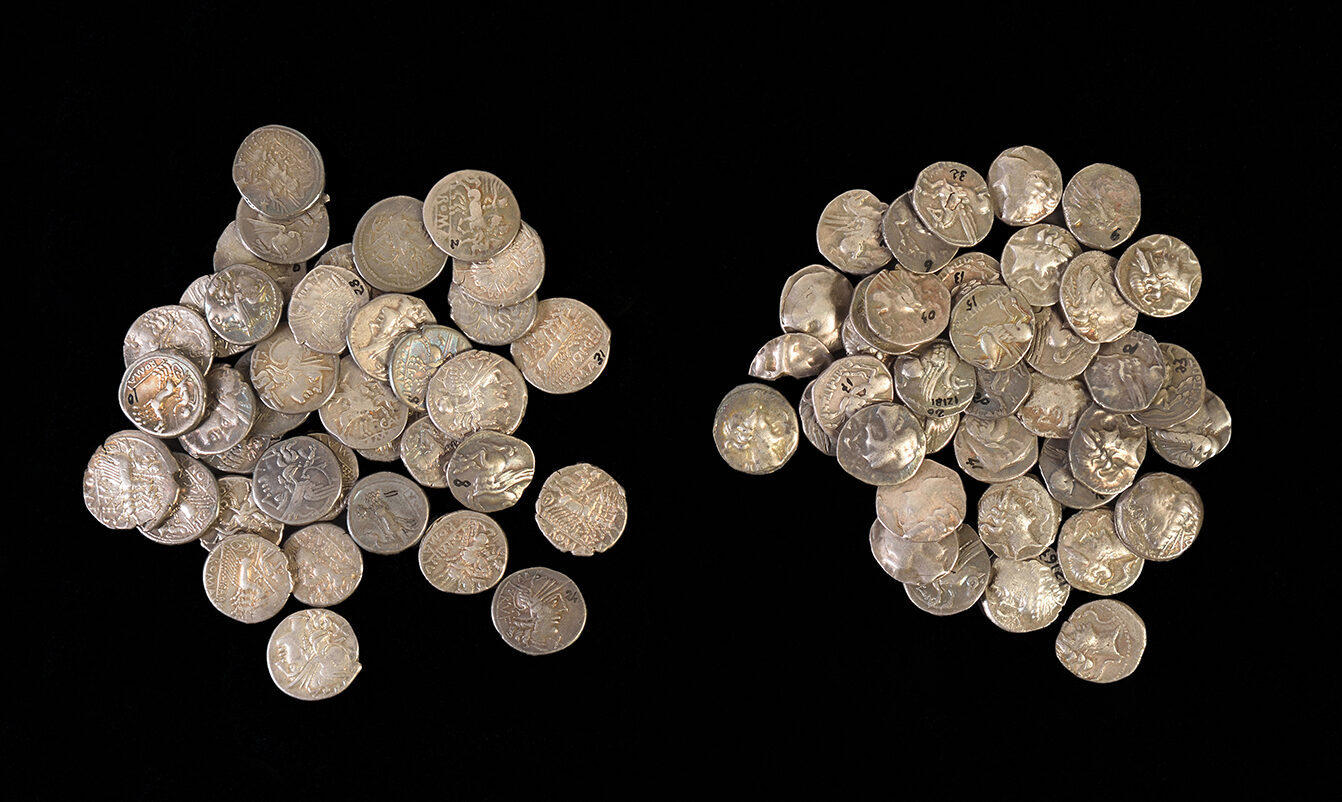
Silver
2nd c. BC
La Barroca, Amer (Selva, Sant Martí del Llémena - Gironès)
In 1953, the Girona Comisaría Provincial de Excavaciones Arqueológicas became aware that a hoard of ancient coins had been acquired by a jeweller of the city. Summoned to the police station, the jeweller explained that the coins had been sold to him by a young man who told him he had found them in the area of Sant Roc de la Barroca, between Amer and Sant Martí de Llémena. The coins were confiscated and placed at the disposal of the Civil Government. After a time, a compensation of 25 pesetas per coin was agreed with the jeweller, amounting to 2,937.50 pesetas. The Provincial Government paid this amount (much more than the jeweller had paid) and thus acquired them for the Archaeological Museum.
The so-called Barroca Hoard consists of 118 silver coins: 42 Emporitan drachmas, one of which is split in half; 2 Iberian denarii (one from Kese-Tarragona and another from Turiasu-Tarazona) and 74 Republican Roman denarii. The Roman denarii, of very precise dating, are from between the years 209-208 BC and 112-111 BC, so the chronology of the hoard has been fixed from that last date, in other words, within the final decade of the 2nd century BC.
Made known in 1953 by Miquel Oliva, the hoard was the subject of a meticulous publication in 1960 by Martín Almagro Basch and Miquel Oliva i Prat. A footnote to this work must have left a bad taste in the mouths of those who had saved the treasure for the public heritage. A well-known Barcelona numismatist assured Miquel Oliva that part of the same monetary set had gone to private collections in Barcelona before the sale to the Girona jeweller had become known.
